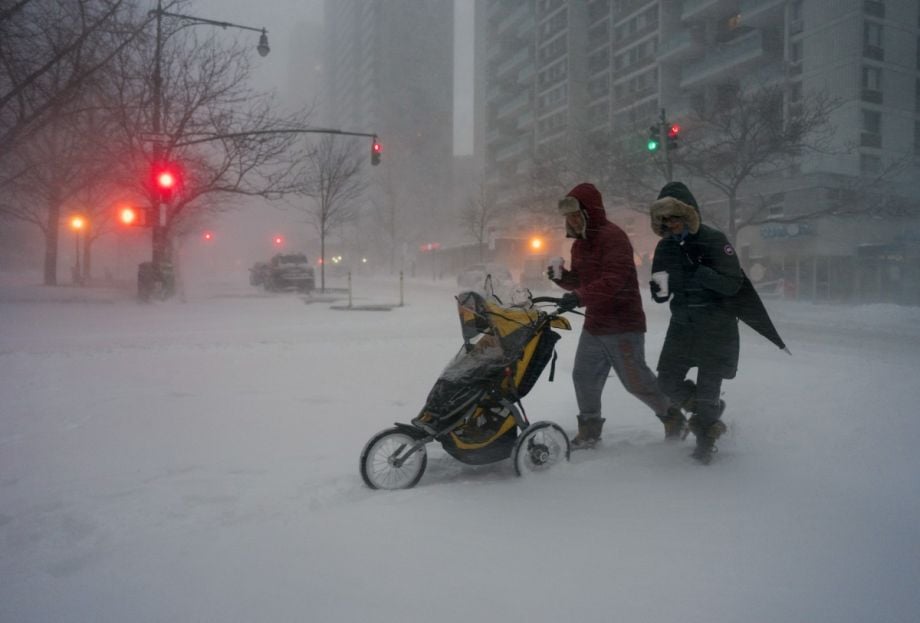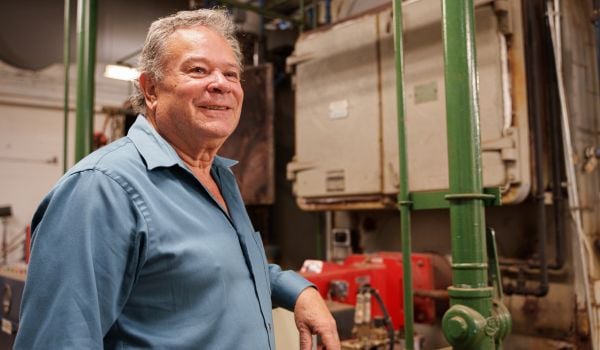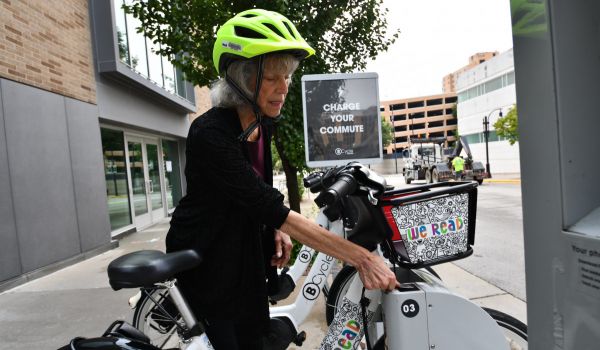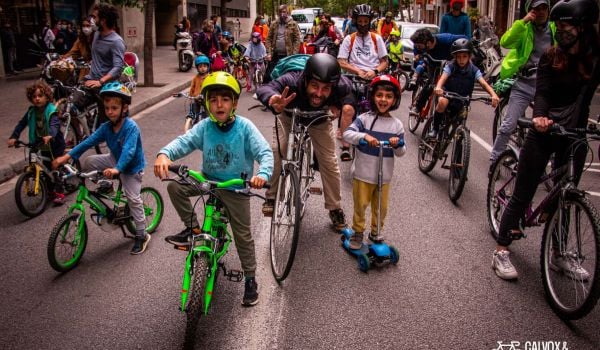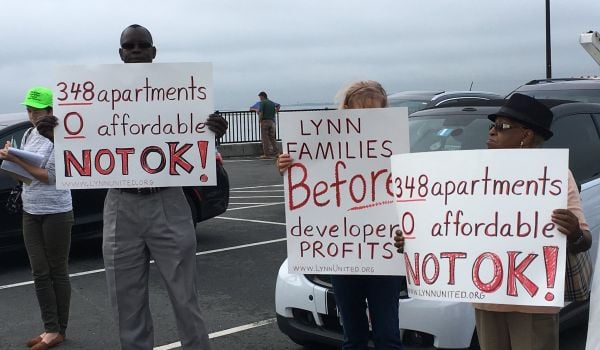Like many good things in life, many of us tend to underappreciate sidewalks until they’re buried beneath 2 feet of filthy, compacted, urban snow.
It’s a common winter scene that should remind us just how valuable these public assets are. After major storms, while roads are still impassable and public transit service is often curtailed, walking may be the best, safest — indeed sometimes the only — option for people to get around. Clearing sidewalks quickly is especially important for wheelchair users, the elderly and others with limited mobility who can’t easily navigate mountains of crusty snow.
But after storms these vital pathways often go neglected, with bike lanes, sidewalks, curb cuts and crosswalks getting doubly buried with snow plowed off streets. If cities are going to get serious about walkability, bikeability and equitable access, we’re going to need to change the way we think about snow.
For starters, let’s look at where the blame lies when sidewalks don’t get cleared. Both Philadelphia and Washington, D.C., faced criticism this winter for not adequately cracking down on property owners who didn’t shovel promptly after winter storm Jonas, which threw down around 2 feet of snow this January.
In both cities, property owners can face fines for not clearing sidewalks in a timely manner. But after Jonas, D.C. Mayor Muriel Bowser decided to “cut people a break,” according to WAMU, and not enforce the legislation. Merciful on businesses and homeowners, maybe, but residents complained to city council that the snowy sidewalks left pedestrians and wheelchair users in the lurch.
“We understand that so far we don’t count for very much in terms of our city’s transportation priorities,” Joe Reiner, a member of the pedestrian safety group All Walks DC, told WAMU. “Shoes and sidewalks are not yet considered to be part of the transportation system in D.C.”
Some council members agreed. “The plan is about roads now. We have to make it about sidewalks and roads,” said Council Member Mary Cheh, chair of the council’s transportation committee, at a public hearing. She said a “crucial change of thinking” was necessary to ensure non-drivers aren’t neglected next time around.
Which raises the question: Is it realistic to expect everyone to clear their own sidewalks? What happens if they don’t, or they can’t? Baltimore pairs young people in search of part-time winter work with seniors who can’t shovel on their own. Philadelphia magazine suggested that city beef up its own youth program in response to Philly’s dismal sidewalk conditions post-Jonas.
The magazine also suggested cities take a page from Portland, Maine, which instead of a fine, issues a complaint to properties that aren’t cleared within mandated timelines. If the complaint is ignored, the city clears the sidewalk and bills the tenant for its removal — about $100, plus a 10 percent administrative fee.
It’s a smart approach that solves the truly important part of the equation — ensuring that sidewalks do get cleared — but it might not work for larger cities due to lack of resources. D.C. used to have a similar ordinance, but it couldn’t be enforced because of the sheer manpower required. The city scrapped it in favor of the fine-only system that Bowser chose not to enforce after Jonas.
Then there’s bike lanes. U.S. cities have stepped up their investment in lanes both protected and not, but in the wake of storms many cities seem uncertain whose responsibility it is to plow them. Both the Gothamist and the Bicycle Coalition of Greater Philadelphia documented buried bike lanes days after Jonas had passed and the streets had been cleared. Often, street snow had actually been plowed into the bike lanes, or cars were using unprotected lanes for parking on snow-narrowed roadways, sending cyclists into the street to contend with traffic.
In a 2014 white paper, Alta Planning and Design suggested that streets truly designed for cars and cyclists alike would build in extra space for snow storage: six feet for a bike lane, plus six feet of storage space along the sidewalk or in a buffer zone.
The paper also recommended — anathema of all anathemas — that the city restrict on-street parking during snow events. At the very least, the paper notes, cities should consider when designing protected bike lanes whether they are wide enough for a snow plowing vehicle to navigate. Chicago, Portland, Seattle, Grand Rapids and a host of other cities own or rent specialized equipment just for the job.
Of course, mayors would face a lot of flak for even suggesting the city clear sidewalks and bike lanes if it comes at the expense of roads. A balance will need to be struck, to ensure roadways are cleared quickly so food delivery and emergency vehicle traffic can resume and that pedestrians and wheelchair users aren’t stranded while they wait for their neighborhood streets to be plowed out.
At the very least, mayors could acknowledge that a more bike- and pedestrian-oriented city demands a new way of dealing with, and thinking about snow. In advance of Jonas, mayors from D.C to Philadelphia recommended people “stay off the streets.” Yes, it was dangerous to be driving a car out there, and yes, during the height of the storm high winds were hazardous to pedestrians and cyclists too. But major snowfall often sets the stage for the most beautiful, calmest hours many of us will ever experience in our cities. When the danger passes, clear the sidewalks so people can appreciate them.
The Works is made possible with the support of the Surdna Foundation.
Jen Kinney is a freelance writer and documentary photographer. Her work has also appeared in Philadelphia Magazine, High Country News online, and the Anchorage Press. She is currently a student of radio production at the Salt Institute of Documentary Studies. See her work at jakinney.com.
Follow Jen .(JavaScript must be enabled to view this email address)


